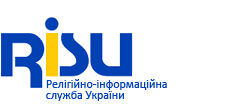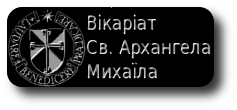
Vatican used nighttime mission to gather relics from St. Paul's tomb
06-07-2009
VATICAN CITY (CNS) -- Vatican technicians entered the Basilica of St. Paul Outside the Walls in the dead of night, drilled a small hole in the tomb under the main altar and extracted fragments of what was inside.
The results were a closely held secret for more than two years.
Pope Benedict XVI announced June 28 that tests performed on bone fragments from the tomb demonstrate they could be the remains of the Apostle Paul, because carbon-14 tests concluded the bones belonged to a human being who lived between the first and second century.
Cardinal Andrea Cordero Lanza di Montezemolo, who served as archpriest of the basilica, told a press conference July 3 that the laboratory tests "evidently agree with the tradition that the tomb is of St. Paul."
But Ulderico Santamaria, director of the diagnostic laboratory for conservation and restoration at the Vatican Museums, was a bit more cautious, saying the bones could be those of the saint "because the analyses do not contradict it. Personally, I am in line with the Holy Father, but as a person of science, I stop at the objective data, which only give indications."
Santamaria showed reporters images of the relics that had been enlarged with electronic microscopes and dated May 12, 2007, showing a time of 1:15 a.m., an hour when the basilica would have been empty so that technicians could work freely and not be seen.
With a microsurgical probe introduced through a tiny hole drilled into the top marble slab of the sarcophagus, Vatican technicians were able to take pictures and collect material with little disturbance to the relics, Santamaria said.
They found microscopic fragments of human bony material, he said, which were subjected to carbon-14 dating. Technicians also found wool and linen fibers covered with gold or dyed in royal purple and indigo, precious materials indicating the burial of an important person.
Grains of incense were also among the materials grasped by the surgical-type tweezers, Santamaria said.
"None of the analyses so far carried out, including the carbon test, are contrary to the likely idea that they could be the remains of the apostle," he said.
The basilica has long been held to be the burial site of St. Paul, but because of the destruction and rebuilding of the basilica, the exact location of the tomb was unknown for centuries. Vatican officials announced in December 2006 that several feet below the basilica's main altar and behind a smaller altar, they had found a roughly cut marble sarcophagus beneath an inscription that reads: "Paul Apostle Martyr."
Because part of the sarcophagus is buried beneath building material, Vatican officials determined they could not dig it out to open and examine the contents. Initially they tried to X-ray it to see what was inside, but the marble was too thick.
Cardinal Cordero Lanza di Montezemolo said introducing a probe into the sarcophagus was an idea approved by Pope Benedict some four years ago.
The cardinal and Santamaria both explained that the slab of marble covering the sarcophagus is marked with circular carvings into which pilgrims once dipped pieces of cloth, which they believed would touch the body of the saint, making them what the cardinal described as "contact relics."
They both explained, however, that those carvings had not penetrated the tomb and that the tiny perforation drilled by Vatican technicians was the only opening.
Cardinal Cordero Lanza di Montezemolo said that the tomb had been "closed and sealed, and had never been opened."
The cardinal said that a complete opening of the tomb in the future had not been ruled out, although there was no concrete plan at the moment to do so. Such a project would be a major operation requiring the approval of the pope, he said. It would entail dismantling the papal altar, extracting the very large sarcophagus and transporting it to a laboratory to be opened and studied.
"One day perhaps it could be studied; this idea has not been excluded," the cardinal said, adding that further analyses could include DNA testing on the human material found.
Santamaria said that the testing had been carried out by laboratories "within the network of the Vatican Museums." Technicians did not know the origin of the material they were testing, he said.
The bony fragments found were not sufficiently large to permit DNA testing, Santamaria said. Likewise, the tiny dimensions of the fiber optics used to illuminate the interior of the sarcophagus and to take photographs did not permit a complete viewing of the large tomb.
The press conference was conducted the same day the Vatican announced that Pope Benedict had accepted the resignation of Cardinal Cordero Lanza di Montezemolo, who will celebrate his 84th birthday in August. The pope chose as the new archpriest of the basilica Archbishop Francesco Monterisi, who served as secretary of the Congregation for Bishops until July 3, his 75th birthday.
http://www.catholicnews.com/data/stories/cns/0903064.htm














